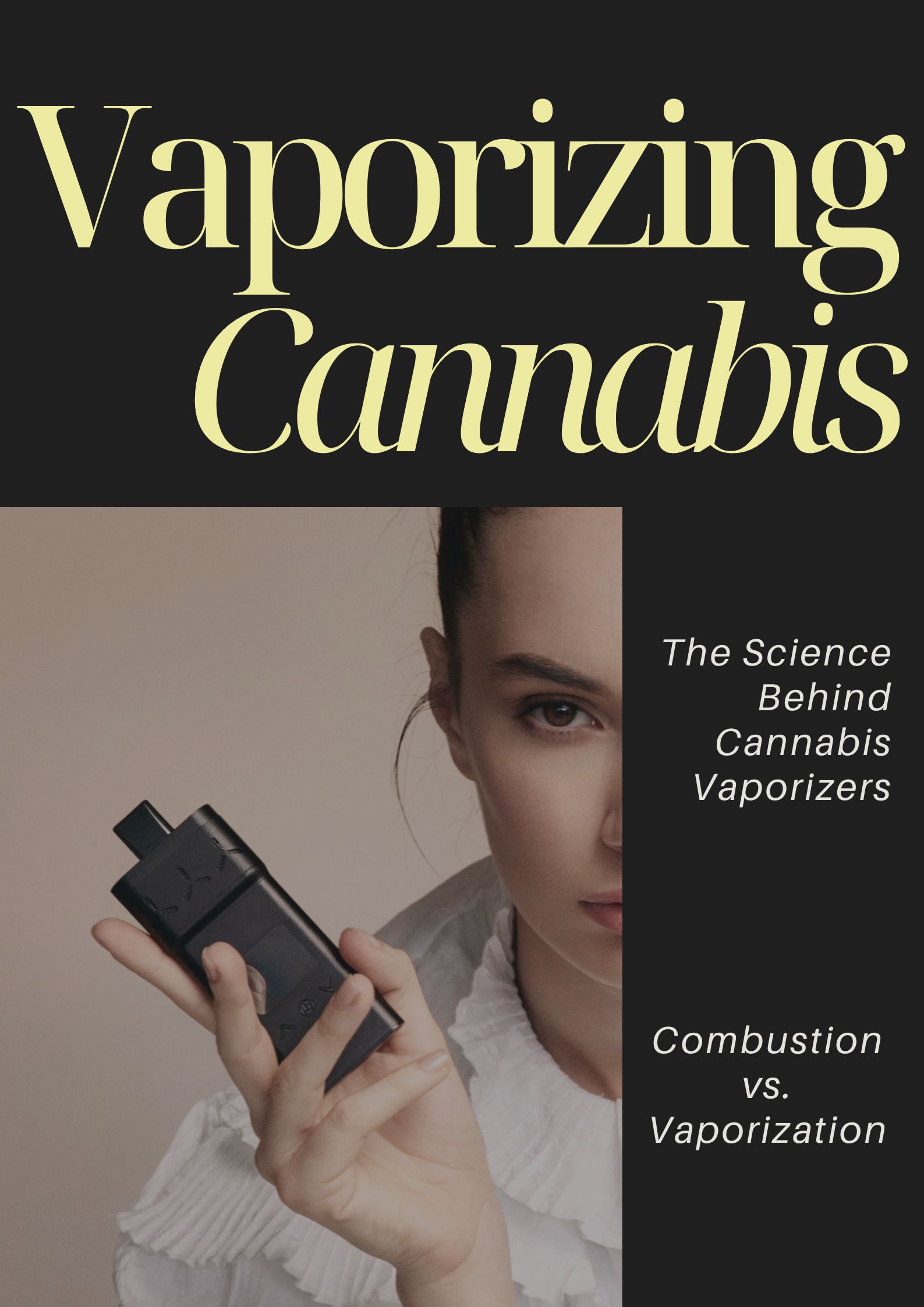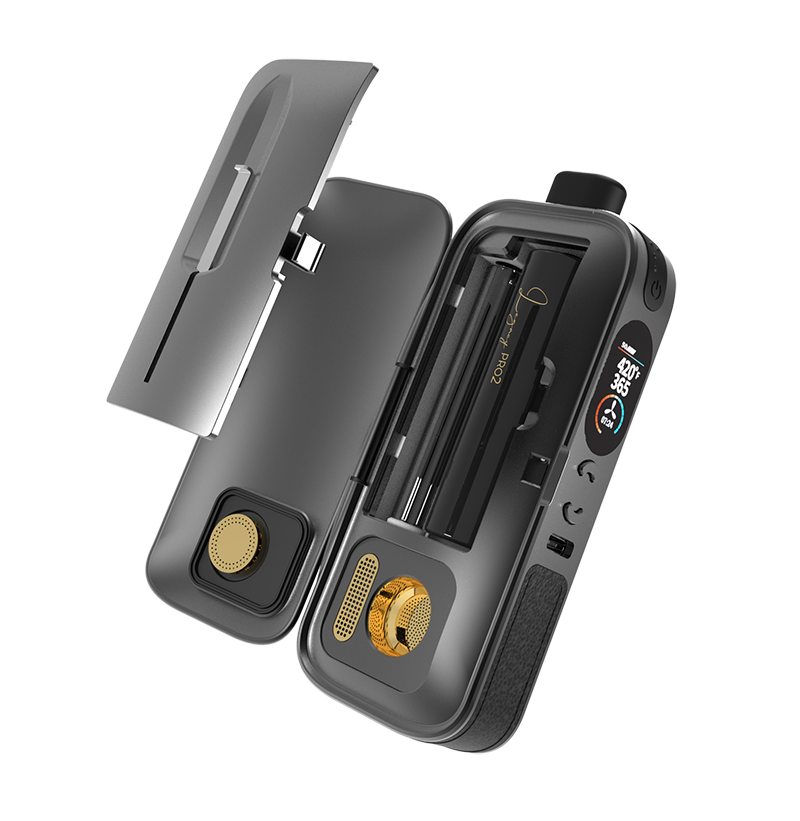Vaporizing Cannabis

Why Vaporizing Cannabis is Becoming Popular
In recent years, vaporizing cannabis has skyrocketed in popularity as health-conscious users look for safer, more efficient, and cleaner alternatives to smoking. Unlike traditional joints or pipes, vaporizers heat cannabis just enough to release cannabinoids and terpenes without burning the plant matter. This means you get the benefits without the harmful byproducts of combustion.
Whether you’re curious about the ideal temperature for vaporizing cannabis, questioning how safe it really is, or wondering if it can help with anxiety and sleep, this guide covers everything you need to know.
What is Vaporizing Cannabis and How Does it Work?
The Science Behind Cannabis Vaporizers
Cannabis contains over 100 cannabinoids and aromatic compounds called terpenes. Each activates at a different boiling point. Vaporizers heat cannabis to precise temperatures that release these compounds into vapor, which is then inhaled. Unlike smoking, there’s no burning, meaning fewer toxins.
Types of Cannabis Vaporizers (Dry Herb vs. Concentrate)
- Dry Herb Vaporizers: Heat the flower directly without combustion.
- Concentrate Vaporizers: Use oils, waxes, or shatter for more potent effects.
- Portable vs. Desktop Vaporizers: Portable vaporizers are discreet and easy to use, while desktop versions offer maximum control and efficiency.
Ideal Temperature for Vaporizing Cannabis

Temperature plays a massive role in the type of experience you’ll have:
Low Temperatures (315°F–350°F): Flavor and Mild Effects
- Best for beginners or daytime use.
- Enhances terpene flavor and provides a gentle, clear-headed high.
- Great for uplifting and creative effects.
Medium Temperatures (350°F–400°F): Balanced Effects
- The sweet spot for many users.
- Offers a mix of flavor, relaxation, and noticeable psychoactive effects.
- Perfect for managing stress or mild pain.
High Temperatures (400°F–430°F): Intense and Sedative Effects
- Stronger body high with sedative properties.
- Best for nighttime use or when seeking relief from insomnia and chronic pain.
- It can produce thicker vapor but may slightly increase irritation.
How Safe is Vaporizing Cannabis Compared to Smoking?
Combustion vs. Vaporization
Smoking burns cannabis at 1000°F+, producing harmful toxins like tar and carcinogens. Vaporizing avoids combustion entirely, drastically reducing exposure to these chemicals.
Health Benefits of Avoiding Smoke
- Cleaner inhalation with fewer toxins.
- Less strain on lungs and throat.
- Reduced risk of long-term respiratory issues compared to smoking.
Scientific Studies on Safety
Studies published in journals like Harm Reduction Journal and Journal of Cannabis Research show that vaping cannabis reduces harmful byproducts while still delivering therapeutic benefits.
Can Vaping Cannabis Help with Anxiety and Sleep?
CBD-Rich Strains for Anxiety Relief
Low-THC, high-CBD strains are especially effective for calming the mind. CBD interacts with serotonin receptors, which can ease anxiety without intoxication.
THC and Sleep: Does it Really Help?
THC-rich strains can help people fall asleep faster. At higher temperatures, vaporizing releases sedative cannabinoids like CBN, which may enhance rest.
Potential Side Effects to Consider
- Overuse of THC may cause paranoia or restlessness in some users.
- Poor-quality vape devices may pose risks if not properly maintained.
- Always consult with a healthcare professional before using cannabis for medical purposes.
Tips for Safe and Effective Cannabis Vaping
Choosing the Right Vaporizer
- Look for reputable brands with precise temperature control.
- Avoid low-quality, unregulated devices that may release harmful chemicals.
Cleaning and Maintenance
- Regularly clean your vaporizer chamber and mouthpiece.
- A clean device ensures smoother vapor and longer lifespan.
Setting the Right Dosage
- Start low and go slow.
- Adjust based on tolerance, strain type, and time of day.
FAQs About Vaporizing Cannabis
1. Is vaporizing cannabis safer than smoking joints?
Yes, studies show vaporizing significantly reduces harmful toxins compared to smoking.
2. What temperature should I vape cannabis for anxiety?
Lower to medium temperatures (around 330°F–370°F) preserve CBD and relaxing terpenes.
3. Does vaping cannabis smell less than smoking?
Yes, vapor odor is milder and dissipates faster than smoke.
4. Can vaping cannabis damage the lungs?
While vaping is safer than smoking, inhaling any substance may still irritate the lungs. Moderation and proper device use are key.
5. How long do the effects of vaping cannabis last?
Effects typically last 1–3 hours, depending on the strain, dosage, and temperature.
6. Is vaping cannabis legal everywhere?
No. Laws vary by country and state, so always check your local regulations.
The Future of Vaporizing Cannabis
Vaporizing cannabis offers a cleaner, safer, and more customizable way to enjoy the plant’s benefits. Whether you’re seeking relief from anxiety, help with sleep, or just a smoother experience than smoking, vaping provides a powerful alternative backed by science.
For the best results, always use high-quality cannabis, invest in a reliable vaporizer, and experiment with different temperatures until you find your perfect balance.


